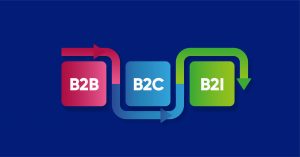Discover how today’s digital changes affect many healthcare trends and sales strategies, which, in one way or another, may have affected how your business is faring. You can also learn why these data-driven insights can be quite crucial for predicting future needs and how understanding its industry shifts will help you effectively capture your select market.
The following insights will help you forecast industry trends so you can somehow strategize and adapt to the ever-evolving digital healthcare sector.
Engage with Key Stakeholders
Engaging with key stakeholders, including healthcare providers, payers, patients, and regulatory bodies, are competent sources from which you can gather valuable insights and feedback.
Also, by building strong relationships with healthcare stakeholders, you can foster more effective collaboration and information-sharing. This will help facilitate and enable more accurate forecasting of industry trends.
You can also explore how digital platforms like banking review sites adapt to these transformations, especially their certificate of deposit account reviews. You can look into how their up-to-date financial assessments can help maintain the stability of your stakeholders and the sector as a whole.
It’s to gain more actionable insights into navigating the evolving landscape of digital transformations in healthcare.
Leverage Data Insights
Harness and equip your team with the power of data analytics so you can forecast healthcare trends effectively. You may utilize advanced algorithms and their predictive models to analyze valuable stats, identifying emerging patterns and shifts within the health industry.
As you leverage healthcare data insights, you, as an organization member, can gain a deeper understanding of your market’s dynamics. This way, you can anticipate future trends and make informed decisions to drive innovation and improve patient outcomes.
Stay Agile and Adaptive
You can utilize agile methodologies, like Scrum or Kanban, which are renowned for their flexibility and iterative approach. These are frameworks that can help empower your team to dissect complex tasks into manageable workflows to foster collaboration and adaptability.
Using these techniques, like daily stand-up meetings, sprint planning, and retrospectives, your organization can effectively manage change, enhance transparency, and deliver considerable value incrementally.
It’s an iterative process that enables you and your team to respond quickly to shifting priorities and customer feedback, ensuring continuous improvement and success in forecasting healthcare trends.
Collaborate Across Disciplines
Foster collaboration across the many disciplines within your organization, and across the healthcare ecosystem.
You can even bring together experts from diverse fields, including those from data science, healthcare, technology, and business, to gain multifaceted perspectives on future trends. As you facilitate these cross-disciplinary partnerships, your organization and that of others in your field can maximize the collective expertise and insights of your diverse stakeholders.
This collaborative approach might just be what’s needed to foster further innovation that will drive informed decision-making and ensure you’re more aligned with emerging healthcare trends.
Monitor Regulatory and Policy Changes
Prompt your team to stay informed about the many regulatory and policy changes, especially those that are relevant and impact healthcare. You can monitor legislative developments, policy announcements, and regulatory updates so you’ll be able to anticipate how these changes affect market dynamics and forecasting efforts.
This proactive approach can make sure your team and those of others are prepared to adapt swiftly to evolving regulatory landscapes. They’ll help you minimize risks and maximize opportunities for strategic growth and innovation within the healthcare industry.
Invest in Continuous Learning
It’s best to invest in continuous learning so you and your team can stay ahead of the evolving trends and technologies in healthcare forecasting. Just stay active and updated on industry developments, attend conferences, participate in workshops, and always seek opportunities for professional development.
Stay well ahead of these latest advancements so your firm can enhance your forecasting capabilities, identify emerging opportunities, and mitigate risks effectively. It’s actually a commitment to lifelong learning that will foster more innovation and make sure your organization, and those in your sector, remain at the forefront of the fast-changing healthcare landscape.
Bottom Line
Embracing digital transformation is indeed essential for forecasting healthcare industry trends effectively. By leveraging data insights, staying agile, having active collaboration, staying updated on regulatory changes, and investing in continuous learning, you can navigate the dynamic healthcare landscape with confidence.
With a forward-thinking perspective and a commitment to innovation, you can better anticipate future trends and drive sustainable growth in the evolving healthcare ecosystem.


